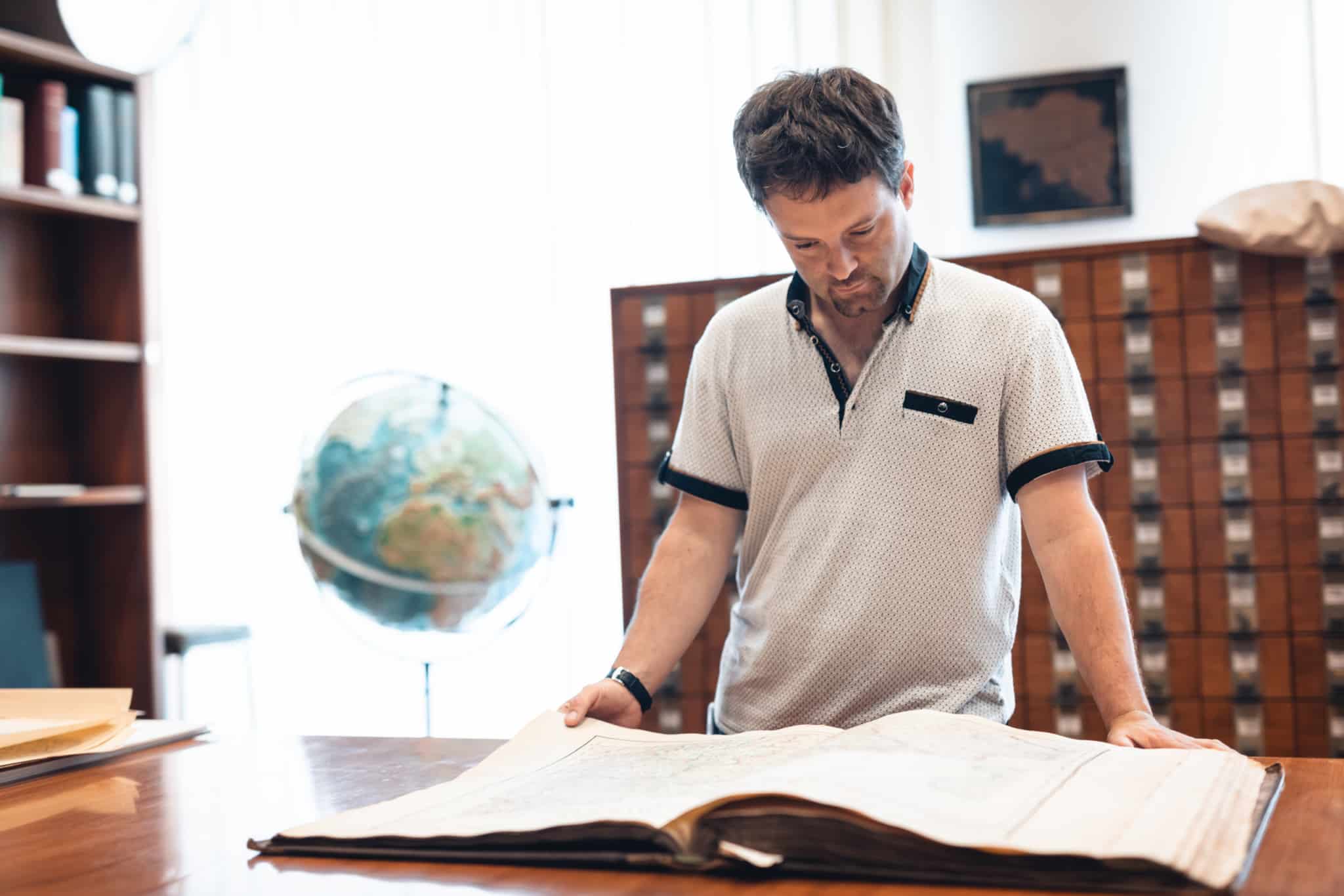The collection of valuable objects contains among other things:
- Manuscripts by classical and medieval authors illustrated with maps, such as Sallust’s Bellum Jugurthinum; Isidore; Honorius Augustodunensis; Sanudo, Liber secretorum; La fleur des histoires; Bartolomeo da li Sonetti’s Isolario
- hand-drawn atlases, including the Atlas des villes des Pays-Bas by Jakob van Deventer (1550-1565), the Atlas Bruxellensis by Christian Sgrooten (1573), the Recueil de plans de villes, de fortifications et de batailles by Pierre Lepoivre (1585-1622), the atlas of the Camps et ordres de marches de l’Armée du Roy en Flandres by Pennier (1694)
- a collection of over 200 hand-drawn maps dating from before 1800, the most important item of which is the Carte de Cabinet des Pay Bas Autrichien (Austrian Netherlands maps) on 275 leaves, also known as the Ferraris Maps (1771-1778), drawn by Count Joseph-Johann-Franz de Ferraris, i.e. the first large-scale topographical map of our national territory
- engraved maps and plans, including the oldest printed topographical map of the Belgian regions (Dese korte cronikel by Cornelius van Hoorn, 1586), street plans of fifty towns by Georg Braun (1541-1622) and Frans Hogenberg (1535-1590) and the two editions of the street plan of Brussels by Martin de Tailly (1647 and 1748)
- ten portulan maps, hand-drawn (sixteenth and seventeenth century) and printed (seventeenth century)
- celestial globes and maps, including Gerardus Mercator’s meridian plans of terrestrial and celestial globes (1541-1551), one of the two copies of the xylographic map of the celestial hemispheres by Ferdinand Verbiest (approx.1670), two globes by Marco Vincenzo Coronelli (approx. 1690), an Arabic Islamic celestial globe (1834)
- the map collection of Philippe Vandermaelen, containing around 3,500 ancient maps and plans
- the Philippe Vandermaelen collection, containing the cartographical and bibliographical production of the Etablissement géographique de Bruxelles, including Atlas universel on 400 folios (1825-1827), the Atlas de l’Europe on 165 folios (1829-1833) and 6,400 folios of maps and plans of Belgium (1830-1878)
- the Atlas cadastral parcellaire de la Belgique of Philippe-Christian Popp, consisting of cadastral maps of about 1,800 Belgian municipalities (1842-1879)
- the first editions of the topographical maps of Belgium, produced by the Dépôt de la Guerre, later renamed the Institut Géographique National (the National Geographical Institute, NGI) (1861 sq.)
- the NGI’s historical collection
